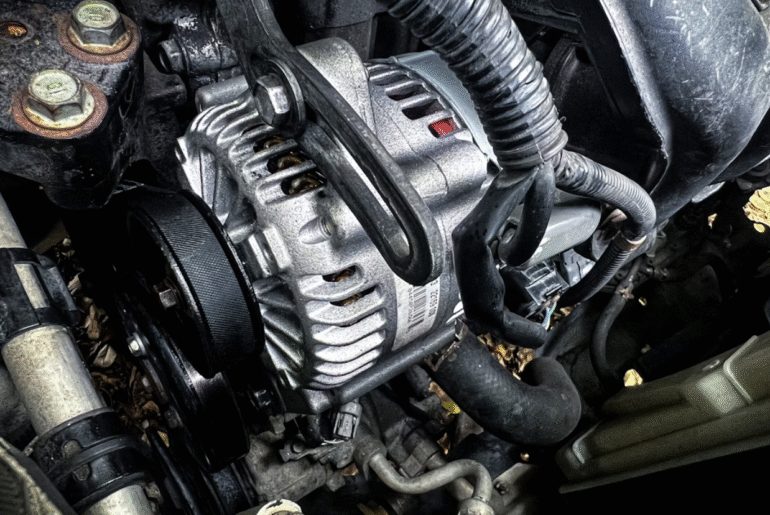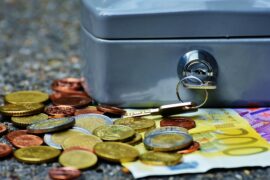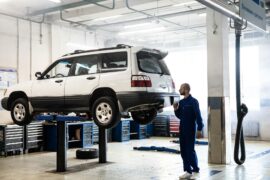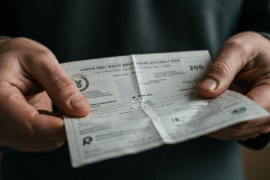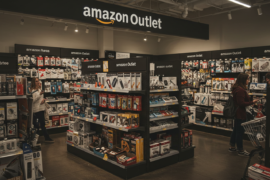This article may contain references to products or services from one or more of our advertisers or partners. We may receive compensation when you click on links to those products or services. Nonetheless, our opinions are our own.
The information presented in this article is accurate to the best of our knowledge at the time of publication. However, information is subject to change, and no guarantees are made about the continued accuracy or completeness of this content after its publication date.
That old car sitting in your driveway might look like a rust bucket, but it could actually still have some potential. When your vehicle reaches the end of its road life, parting it out can put significantly more money in your pocket than selling it whole to a scrapyard.
Most car owners don’t realize the hidden value packed into their damaged vehicles. Even cars that won’t start, have major engine problems, or have suffered collision damage contain dozens of valuable components that other drivers desperately need. There are even online services that can provide a junk car estimate and buy your scrap vehicle. And how much can you get for it? That’s what we will explain in this article.
What Makes Car Parts Valuable?
The used auto parts market thrives on one simple principle: replacement parts from dealerships cost a fortune. A new headlight assembly might run $500 from a dealer, but you can sell a good used one for $100-150. That’s still a bargain for the buyer and serious profit for you.
Age doesn’t always kill value either. Classic cars from the 1980s and 1990s are becoming increasingly popular, and their parts are getting harder to find. Your 1995 Honda Civic might seem worthless, but its manual transmission could fetch $400-600 from someone restoring a similar vehicle.
Certain car brands hold their value better than others. German luxury vehicles like BMW and Mercedes-Benz have expensive replacement parts, making used components highly sought after. Japanese brands like Toyota and Honda also maintain strong demand because of their reputation.
When Parting Out Makes Sense
Parting out works best when your car has valuable components but major problems that make it worthless as a complete vehicle. A luxury car with a blown engine but perfect interior and electronics is an ideal candidate.
Cars with extensive collision damage often hide valuable undamaged parts. The front might be smashed, but the rear suspension, interior, and electronics could be perfect.
High-mileage vehicles where the body and interior outlasted the powertrain also make good parts cars. Even if the engine is tired, many other components remain valuable.
Age matters too. Parts from cars that are 10-25 years old often have the best balance of demand and availability. Newer cars have parts under warranty, while very old cars have limited appeal.
Top Money-Making Parts to Remove
Not all car parts are created equal when it comes to resale value. Focus your efforts on these high-value components:
- Engine components: The engine block, transmission, and related parts often represent the biggest money makers. A good used engine can sell for $1,000-4,000, depending on the make and mileage. Even if your engine has problems, individual components like the alternator, starter, or fuel injectors might still work perfectly.
- Electronic systems: Modern cars pack expensive electronics that fail frequently. GPS navigation systems, backup cameras, and infotainment screens command high prices.
- Body panels and lights: Doors, hoods, fenders, and bumpers are expensive to replace and commonly damaged in accidents. Clean, undamaged panels sell quickly. Headlight and taillight assemblies are particularly valuable on newer vehicles.
- Interior parts: Leather seats, especially heated or powered versions, attract serious buyers. Complete seat sets can bring $500-1,200. Even smaller items like steering wheels, gear shifters, and dashboard components have steady demand.
- Wheels and tires: Factory alloy wheels often sell for $100-300 each, especially from popular models. If your tires have decent tread left, package them with the wheels for maximum value.
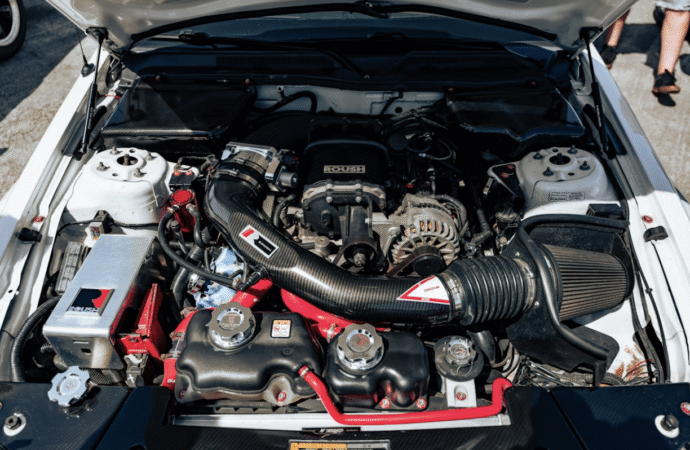
Voted "Best Overall Budgeting App" by Forbes and WSJ
Monarch Money helps you budget, track spending, set goals, and plan your financial future—all in one app.
Get 50% OFF your first year with code MONARCHVIP
How to Price Your Parts for Maximum Profit
Research is your best friend when setting prices. Check multiple sources to understand what your parts actually sell for, not just what people ask for them.
Start with online marketplaces to see completed sales of identical parts. This shows real market prices, not wishful thinking.
Don’t forget about car-specific forums and Facebook groups. Enthusiast communities often pay premium prices for hard-to-find parts. A rare performance part might bring twice as much from an enthusiast compared to the general marketplace.
Price competitively, but don’t undervalue your items. Factor in the time you spent removing parts and the convenience you’re providing buyers. Most people will pay a reasonable premium to avoid junkyard hunting.
| Part Category | Low End | High End | Best Sellers |
| Engine/Trans | $300 | $4,000 | Complete assemblies |
| Electronics | $50 | $800 | Navigation, cameras |
| Body Panels | $75 | $500 | Doors, hoods |
| Interior | $25 | $1,200 | Leather seats |
| Wheels/Tires | $50 | $300 each | Alloy wheels |
Where to Sell Your Parts
Multiple sales channels maximize your profits and speed up the selling process.
- Online car buying services: Companies like JunkCarsUS and similar services offer instant online quotes and will buy your entire vehicle, even when it’s only good for parts. While you won’t make as much as parting it out yourself, these services handle pickup and paperwork. They’re perfect when you want quick cash without the hassle of removing parts and dealing with individual buyers.
- Online marketplaces: eBay reaches the largest audience and often brings the highest prices, especially for rare or specialty parts. The downside is fees and shipping hassles. Facebook Marketplace and Craigslist work well for larger items that buyers can pick up locally.
- Auto salvage yards: Some salvage yards buy individual parts from private sellers, though they’ll pay wholesale prices. This option works well for items that are hard to sell individually or when you want to move everything quickly.
- Car forums and groups: Brand-specific communities often pay top dollar for parts they need. Join Facebook groups for your car’s make and model, then post parts with photos and prices. These buyers understand what they’re getting and ask fewer questions.
- Local mechanics: Independent repair shops sometimes buy used parts to save their customers money. Build relationships with a few local shops — they might become regular customers.
The Reality Check on Earnings
Your actual earnings depend heavily on your car’s make, model, year, and condition. A 15-year-old economy car might yield $800-1,500 in parts sales, while a luxury vehicle could bring $3,000-6,000 or more.
Take into account the time investment. Removing parts takes hours, cleaning them adds more time, and dealing with buyers requires patience. If you’re mechanically inclined and enjoy the work, the hourly rate can be quite good. If you hate getting dirty and don’t own tools, the math might not work out.
Consider your space situation, too. Storing dozens of car parts while waiting for buyers requires garage or shed space. Parts left outside deteriorate quickly and lose value.
Tips to Make the Process Smoother
Organization saves time and money. Clean parts thoroughly before listing — buyers pay more for items that look good in photos. Take quality pictures from multiple angles and write detailed descriptions, including part numbers when possible.
Keep all hardware with each part. Buyers get frustrated when bolts, clips, or brackets are missing. Store small hardware in labeled bags taped to the main component.
Price parts to move. It’s better to sell quickly at fair prices than to store items for months, hoping for premium buyers. Your garage space has value, too.
Lastly, think if you can bundle related parts. Selling a complete interior or all the suspension components together often brings more money than individual pieces.
The Bottom Line
Parting out your old car takes more effort than selling it whole, but the financial rewards justify the work for many people. A systematic approach focusing on the most valuable components can turn your automotive headache into a decent payday.
Success requires realistic expectations about pricing and time investment. You’re not going to get rich, but you can earn significantly more than scrap value while helping other car owners save money on repairs.
Start with the most valuable parts and work your way down. Even if you only sell half the components, you’ll likely exceed what a junkyard would pay for the complete vehicle.

Reviewed and edited by Albert Fang.
See a typo or want to suggest an edit/revision to the content? Use the contact us form to provide feedback.
At FangWallet, we value editorial integrity and open collaboration in curating quality content for readers to enjoy. Much appreciated for the assist.
Did you like our article and find it insightful? We encourage sharing the article link with family and friends to benefit as well - better yet, sharing on social media. Thank you for the support! 🍉
Article Title: How Much You Can Earn from Selling Your Old Car for Parts
https://fangwallet.com/2025/07/25/how-much-you-can-earn-from-selling-your-old-car-for-parts/The FangWallet Promise
FangWallet is an editorially independent resource - founded on breaking down challenging financial concepts for anyone to understand since 2014. While we adhere to editorial integrity, note that this post may contain references to products from our partners.
The FangWallet promise is always to have your best interest in mind and be transparent and honest about the financial picture.
Become an Insider

Subscribe to get a free daily budget planner printable to help get your money on track!
Make passive money the right way. No spam.
Editorial Disclaimer: The editorial content on this page is not provided by any of the companies mentioned. The opinions expressed here are the author's alone.
The content of this website is for informational purposes only and does not represent investment advice, or an offer or solicitation to buy or sell any security, investment, or product. Investors are encouraged to do their own due diligence, and, if necessary, consult professional advising before making any investment decisions. Investing involves a high degree of risk, and financial losses may occur including the potential loss of principal.
Source Citation References:
+ Inspo
There are no additional citations or references to note for this article at this time.
